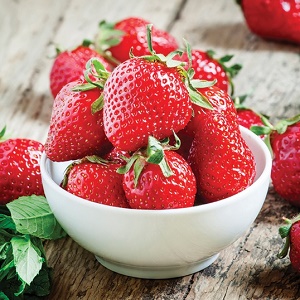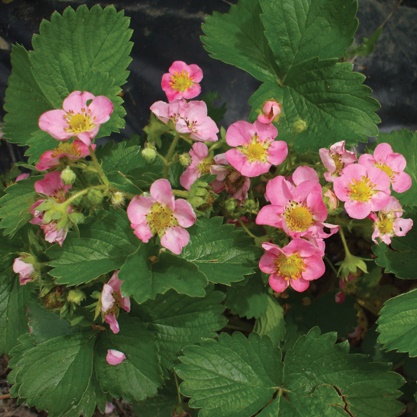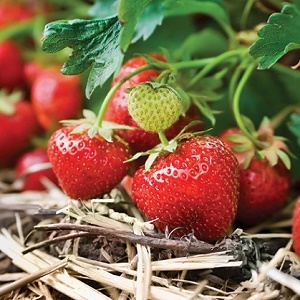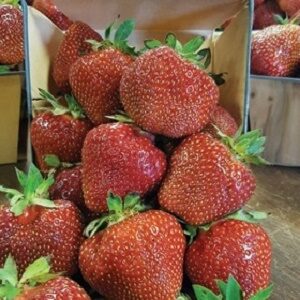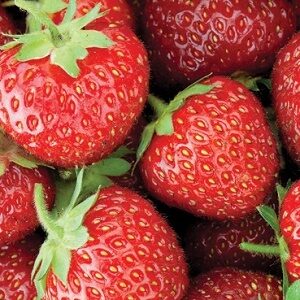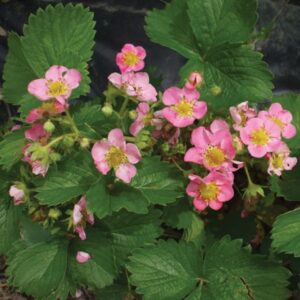Strawberries (Fragaria x ananassa)
Almost everyone recognizes and loves this attractive, highly nutritious and tasty berry. Strawberries are tied with haskaps in first place for the earliest fruit of the season. They are the easiest fruiting ground cover to grow, providing you have a sunny, well drained spot. Containers and raised beds are good alternatives, but most are planted 45-60 cm (18-24") apart in a row. By the following year the spaces will be filled in with baby plants from the above ground runners that the originals have sent out. Strawberries come in two main types.
JUNE-BEARING varieties. After being planted in the spring they will send out lots of runners. The following year they should produce a large crop of berries over several weeks time. You can keep your patch productive for a number of years if you renovate it after harvest is done. This means removing the old plants and clipping off the others.
DAY-NEUTRAL varieties. These will start producing in the year you plant them. You will get a moderate but continuous supply of berries during the summer and on into the fall. Day-neutral plants form fewer runners. Day-neutrals are usually replaced after two years.
Strawberry : LAUREL bare root plant
$1.95
Cavendish has long had a loyal following of local gardeners as well as commercial growers. Now Laurel is poised to pick up the torch as an improved Cavendish for mid-season production. Deep red, generous sized berries have the colour, quality and flavour for fresh markets and better firmness for freezing. Laurel also has improved uniformity, holding it's size well through multiple pickings. Vigorous growth, good runnering and last but not least–improved resistance to red stele, verticillium wilt and black root rot.
Bundle of 25 $25.00
100 plants or more $65.00/100 plants
SELF-FERTILE | ZONE 3/4 | HARVEST: LATE JUNE
